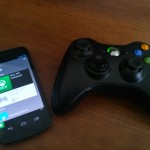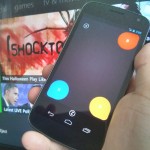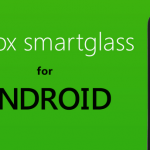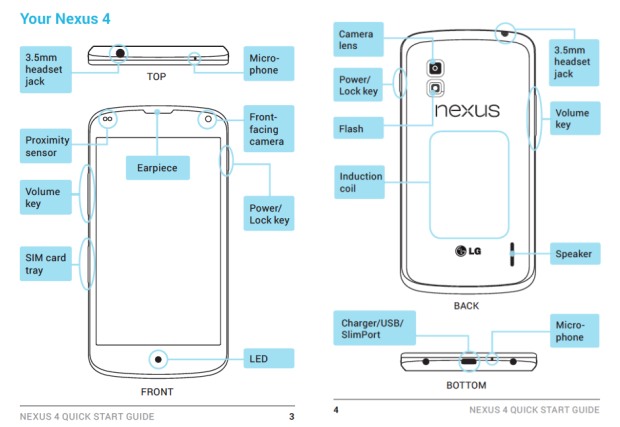Android Authority |
- Galaxy Note 2 gets open source kernel release for T-Mobile, US Cellular, Sprint
- Xperia Tablet S to resume sales mid-November
- Razer’s Project Fiona heads to the FCC, sans handles
- LG Nexus 4 promo materials spotted in Carphone Warehouse retail store
- New DMCA ruling: jailbreaking of smartphones legal starting 2013, but not for tablets
- Google’s Nexus 4, Nexus 10, Nexus 7 3G and Android 4.2 announcement event cancelled, Sandy to blame
- Samsung’s Galaxy S3 Mini passes FCC test, may come to U.S. after all
- Casio announces the Paper Writer V-N500, at the ridiculous price of $2,500
- 23 of the top 500 Google Play Apps considered to be malware; malware up 580% this year (Infographic)
- Huawei’s 6.1-inch Ascend Mate is nothing but a big phone-y
| Galaxy Note 2 gets open source kernel release for T-Mobile, US Cellular, Sprint Posted: 27 Oct 2012 05:03 PM PDT
Openness is one of the main advantages Android has over other platforms like iOS. With this in mind, Android smartphone manufacturers would usually release the open source kernel source code for their smartphone releases, which modders and tweakers can use to make their own builds. With the release of the Samsung Galaxy Note 2 on various carriers, such as T-Mobile and Sprint, Samsung has also released open source kernel files for these models. As a bonus, Sammy has also released the source or the AT&T Galaxy Rugby Pro. These are available for download via opensource.samsung.com. You can get the kernel source separately for the Sprint, T-Mobile and US Cellular versions, and also for the AT&T Galaxy Rugby Pro. These open source kernel releases are quite the resource for advanced Android users out there. But the more interesting issue at this point is whether it will still be legal to root your phone or to install a custom ROM. The U.S. Library of Congress has released new guidelines on the legality of rooting/jailbreaking and phone unlocking, which makes for good reference to anyone into such tweaks. Does this source code release give implicit approval to tweak and install custom ROMs? Related Posts |
| Xperia Tablet S to resume sales mid-November Posted: 27 Oct 2012 04:59 PM PDT Sony Japan has confirmed that the 9.4-inch Xperia Tablet S tablet will resume sales mid-November. A few weeks ago the company halted sales when a small manufacturing fault was found – it was discovered that water breached part of the ‘waterproof’ chassis on some of the units. This defect occurred because of a small gap between the display panel and the back of the product that would let water reach the inside of the tablet in case of accidental spills. Sony had shipped around 100,000 units before discovering the issue, which will result in a lot of unhappy customers. However, Sony predicted that this problem will not affect earnings generated by the tablet. As compensation for the inconvenience, Sony is offering free repair services and inspection to customers in most markets, so be sure to take a trip to your local Sony store if you are worried your device may be affected. Related Posts |
| Razer’s Project Fiona heads to the FCC, sans handles Posted: 27 Oct 2012 03:34 PM PDT
With gaming being a major use for tablets, it’s no surprise that we’re seeing more tablets introduced that focus strictly on gaming, like Razer’s Project Fiona. This week, Razer filed documents with the FCC related to Project Fiona, but the handles shown off early on seemed to be curiously absent. While the controller handles didn’t appear in Razer’s filings with the FCC, an accessory list makes note of a controller, so it doesn’t look like the handles are gone for good, but are now part of an accessory. The controller is described as having a 2,800 mAh battery, so it appears that the controller is detachable, and may even work without having to connect to the tablet. It’s no secret that Razer has been actively seeking input from the public on its upcoming tablet, so did the community decide that the controller should be modular, or was is that way all along? It is certain that the device has changed a lot since we last saw it. How much do you think Project Fiona is going to change by the time the tablet finally goes on sale? Do you see yourself buying one, or would you prefer an Android-powered gaming tablet? Related Posts |
| LG Nexus 4 promo materials spotted in Carphone Warehouse retail store Posted: 27 Oct 2012 11:23 AM PDT
Since Google had to cancel its New York media event due to Hurricane Sandy – although we expect it to take place at a latter date in the very near future – it just means that we have time for even more Nexus-related leaks. In fact, today we're going to show you new LG Nexus 4 images that come our way via Carphone Warehouse. According to xda-developers user adamski123, these LG Nexus 4 promo images have been spotted in a local Carphone Warehouse store, as the UK retailer has apparently created display adverts for Google's upcoming product. We'll remind you that just earlier this week, the retailer mistakenly, or purposely, posted the LG Nexus 4 page on its online store, and then pulled it hours later. We even saw some strange reports detailing the whole thing, with some of them suggesting that the LG Nexus 4 image used by Carphone Warehouse was fake, and that the phone will not run Android 4.2 out of the box but Android 4.1.2. Today's images show us a Nexus 4 image that we've seen before in recent @evleaks tweets – the image used on the Carphone Warehouse site a few days ago was also revealed by the same source.
According to the display advert, the LG Nexus 4 will sport a 1.5GHz quad-core Snapdragon S4 processor, 8-megapixel camera with LED flash, and Android 4.1 Jelly Bean. Pricing details are also revealed. The phone will be free with new contracts with a monthly tariff of at least £31, or £389.95 when purchased at full retail price. Has anyone seen similar LG Nexus 4 in-store promotions? Thanks, tipster! Related Posts |
| New DMCA ruling: jailbreaking of smartphones legal starting 2013, but not for tablets Posted: 27 Oct 2012 11:00 AM PDT  (Tablet PC from Shutterstock) Law and policy can be confusing things, especially when you consider the dichotomy between the spirit of the law and the letter of the law. While the 1998 Digital Millenium Copyright Act (DMCA) aimed to curb copyright infringement and policy, an interesting backlash is that legal circumvention constituting fair use has become limited. Case in point: there is always the question of software ownership, such as whether you are free to re-sell apps and other digital content that you have bought in the first place. It seems we now have a clearer answer. To clarify fair use principles, the Librarian of Congress grants exemptions on these issues, which are valid for three years. For instance, in 2010 the Librarian allowed read-aloud functionality for e-books for access by the disabled if there are no alternative means for access by the blind. For the 2013 to 2015 period, though, the Librarian has issued a somewhat confusing policy, which will affect smartphone and tablet owners. Ars Technica has quite a technical and policy-oriented discussion on the matter, which pertains to jailbreaking (or rooting, in the case of Android devices), network-unlocking and content ripping. You can check out the source link for the discussion, but for the impatient, here’s a summary. Jailbreaking/rooting. Starting January 2013, you can legally jailbreak or root your smartphone, which may include the iPhone or any Android phone. This was the same case as in the 2010 rules. However, this time, the ruling is explicit that the jailbreaking is only legal for “the sole purpose of enabling interoperability of [lawfully obtained] applications with computer programs on the telephone handset.” Meanwhile, tablets are a different thing altogether. The Librarian of Congress says that “the record lacked a sufficient basis to develop an appropriate definition for the ‘tablet’ category of devices, a necessary predicate to extending the exemption beyond smartphones.” The worry here is that other tablet-like devices may be defined as a tablet, and therefore enjoy the same DRM circumventions. These may include laptops, e-book readers, and even handheld videogame devices. In short: you can legally root your smartphone but not your tablet. Phone unlocking. In the 2006-2009 and 2010-2012 periods, the Librarian permitted the unlocking of phones with the purpose of switching to another carrier. Starting 2013, this will come with a provision. Users can only arbitrarily unlock phones purchased before January 2013. Phones bought after that date will require the original carrier’s permission before you can legally unlock these. This change in ruling came from the Librarian’s view that software is not actually owned by the user upon purchase, but you are only granted rights and licenses under the EULA. As such, unlocking a phone (which is essentially software in nature) without the consent of the original carrier is no longer in fair use. In short: starting 2013, you need to ask explicit permission from your carrier before legally unlocking your phone. Content ripping. Another interesting point of contention for smartphone and tablet owners is the concept called “space shifting.” There’s always the question of whether it’s legal to rip a DVD for viewing on your smartphone or tablet. According to the Librarian, it will be legal for video content to be ripped only for the following: noncommercial videos, documentaries, non-fiction multimedia e-books offering film analysis, and educational purposes in film studies by students. Another exemption is for disabled access, meaning ripping content into a medium that can render the content in a way accessible to the blind or deaf. The Librarian does not allow space-shifting — or ripping so you can watch a DVD video on another device. However, there is a big caveat here. The Librarian says there is no court that has proved this is covered within fair use. However — and this is a big “however” — a fair use ruling can only be ruled by a court of law. But the courts of law would usually only view an act as within fair use if there is an exemption. So there is a circularity involved, and by default, ripping is illegal. In short: this implies that anyone who has copied a CD or DVD into a portable media player has already infringed on the publisher’s copyrights. Isn’t this a broken system or what? Related Posts |
| Google’s Nexus 4, Nexus 10, Nexus 7 3G and Android 4.2 announcement event cancelled, Sandy to blame Posted: 27 Oct 2012 10:53 AM PDT
Thanks to recent leaks and reports, we have a general idea of what Google should unveil during its upcoming media event – initially scheduled to take place in New York on October 29 – but, with two days left to go, we have some bad news from Android fans: the playground is temporarily closed. Google had to cancel the announcement due to Hurricane Sandy. The location of the event – a waterfront pier – is now in an evacuation zone, as New York is now in a state of emergency. Android Authority, invited to attend the event, can confirm Google's cancellation. Here's the short email we have received:
Google was expected to unveil new products on Monday, including the LG Nexus 4 smartphone, the Samsung Nexus 10 tablet and the 32GB versions of the Nexus 7 (Wi-Fi and Cellular + Wi-Fi). All these devices should run Android 4.2 Jelly Bean out of the box, with Google also expected to introduce the main features of its new mobile OS version. The company will surely reschedule the press event and we'll be back with more news on the matter as we have them. Related Posts |
| Samsung’s Galaxy S3 Mini passes FCC test, may come to U.S. after all Posted: 27 Oct 2012 10:29 AM PDT
There isn't that much buzz surrounding the Samsung Galaxy S3 Mini after it was officially unveiled, no thanks to the phone's rather weak specs. But if you have a thing for a Galaxy S3-lookalike in a smaller form factor, you'll be happy to hear that the Mini has been deemed safe for usage by FCC. The rendezvous also confirmed that the phone won't be shipping with a 4G LTE radio.
At the time of its introduction, Samsung said that the company wants to meet the demand for a 4-inch phone in the European market. This – and the lack of 4G LTE – is a sign that it may not be offered in the U.S. anytime soon. The green light from FCC, however, opens a path for the S3 Mini's future arrival in the country. Given its strong resemblance to its bigger S3 cousin, the mid-range phone can become a hot item if priced right. As a reminder, the Galaxy S3 Mini packs a 4-inch Super AMOLED display with 800 x 400 resolution, a dual-core 1GHZ NovaThor processor, 8GB/16GB onboard storage, microSD support, 5MP rear camrera, VGA front cam, NFC, and Android 4.1 Jelly Bean. Related Posts |
| Casio announces the Paper Writer V-N500, at the ridiculous price of $2,500 Posted: 27 Oct 2012 10:00 AM PDT
Casio has announced the Paper Writer V-N500 which carries a price tag of ¥200,000. That is about $2,500 per tablet. At that price, one would expect it to be packing an octo-core processor and be plated in gold. That is not the case. The tablet packs a 10.1 inch screen with a resolution of 1280×800. So there is no HD. It has a 1.5GHz dual core OMAP processor, runs Android 4.0, and has a removable battery. Combined with the dated specs, the tablet also includes a special case that allows it to scan documents and business cards. Being able to scan the special case includes an area where you can strap a sheet of paper in and the device’s 5MP camera will scan the document. It can also scan business cards. The special interface Casio created for the tablet is able to recognize special characters. This allows users to assign commands when they see them. For instance, if they see the pound sign, it could create a calender event. So who, exactly, is going to want to buy this Casio tablet?Casio has expressed that this isn’t the kind of thing individuals will buy. That was actually a relief to hear because we’d hate to think a leader at a company that big had gone that crazy. They already know the average consumer won’t be interested. Casio’s tablet will be offered to business as a solution for their workers and will likely be sold in bulk to offices and other businesses. There is some good news, though. Casio has promised to keep supporting the tablet for a few years. That’s way longer than most OEMs support their devices. So if a business actually does invest in this, at least they won’t have to upgrade for a little while. Of course, that doesn’t make the tablet any more worth it. It also doesn’t prevent Casio from releasing upgraded hardware next year anyway. If you want to see the full demonstration, check out the video below. Is there any business crazy enough to buy into this? Let us know what you think. Related Posts |
| 23 of the top 500 Google Play Apps considered to be malware; malware up 580% this year (Infographic) Posted: 27 Oct 2012 09:30 AM PDT
In the Android world, Malware has been on the increase in recent years as the platform has gotten more powerful and more apps have been released. How much has it increased exactly? According to TrustGo, 23 of the top 500 Google Play apps are considered high risk. Malware over all is up 580%. The interesting statistic is the 23 apps in the top 500 over at the Google Play Store. What qualifies as high risk, exactly? An example of what TrustGo considers high risk is applications like Talking Tom Cat Free. In the Infographic below, you can see that Talking Tom Cat Free jacks your phone number and sends it to a third party. That’s a big no-no, Talking Tom Cat. That app alone has had 50 million downloads since its release. These high risk apps aren’t dangerous on the face of them. For instance, your phone probably won’t get hacked, your storage won’t get wiped, or anything like that. Most malicious apps grab your phone number and sell it to third parties. Some will grab info from your contacts or start sending you ad-laden text messages.
Run for the hills, we are all doomed! Malware is everywhere!If that’s been your reaction, you may be suffering from a term The Next Web refers to as FUD. FUD stands for Fear, Uncertainty, and Doubt. It’s a popular and powerful marketing technique companies use to coerce people into buying things. Things such as mobile anti-virus programs. While the numbers seem ridiculous and awful, they really aren’t. Who even uses Tom Talking Cat Lite anymore? Yes, Malware is up 580%. That sounds drastic. To put it in perspective, The Next Web reports that only 1.69% of all Android apps across all app markets are malicious in some way. Most of those aren’t even in the Google Play Store. What about that 23 of the top 500 statistic? That’s 4.6% of the top apps that are high risk. Is it really worth getting worked up over 4.6%? Of course, phone security is important. Learning the tips and tricks to spotting Malware, being informed, and understanding application permissions can go a long way to keeping you safe. A lot more so than many anti-virus apps can. So who’s ready for a holiday inspired Infographic? You check out the one TrustGo released here. Related Posts |
| Huawei’s 6.1-inch Ascend Mate is nothing but a big phone-y Posted: 27 Oct 2012 05:49 AM PDT
The success of the Galaxy Note series has left other manufacturers scrambling for an answer. From HTC's J Butterly and Sony's Odin, to Huawei's Ascend Mate – everyone's trying to get a piece of the lucrative phablet pie. Hold up, let's scratch the last one and move Huawei's offering from the list, as it's been proven to be a fake. Or has it? According to GSM Insider, the Ascend Mate may turn out to be the Huawei Honor 2 instead, which won't be packing that big of a screen – or anything close. It's speculated only to have a 4.5-inch IPS screen. Other expected specs of the Huawei Honor 2 include the home-brewed quad-core K3V2 processor, 2GB RAM, 8MP rear-facing camera, and Android 4.1 Jelly Bean. The phone may be launched as early as October 29. It's hard to make a case for the existence of the Ascend Mate for now. So you know what – until we see pictorial evidence of the Ascend Mate and/or something more concrete, we'll place it under the rumor/fake folder. If you're still on the lookout for that Galaxy Note alternative, you can switch your obsession from the Mate and its supposed 6.1-inch display to the aforementioned J Butterfly and Odin instead. Thanks, LiuXang! Related Posts |
| You are subscribed to email updates from Android Authority To stop receiving these emails, you may unsubscribe now. | Email delivery powered by Google |
| Google Inc., 20 West Kinzie, Chicago IL USA 60610 | |




























 It’s a bit surprising that the collision of mother nature, Google’s event schedule, and sensitive travel itineraries hasn’t caused Google to issue a public or private statement regarding the event’s status. I can’t imagine they would risk hosting an event without electricity, especially when traveling to the venue could prove unsafe and potentially life threatening. But as we speak, many potential attendees could be readying themselves to travel to NYC, where they will be greeted by a hurricane.
It’s a bit surprising that the collision of mother nature, Google’s event schedule, and sensitive travel itineraries hasn’t caused Google to issue a public or private statement regarding the event’s status. I can’t imagine they would risk hosting an event without electricity, especially when traveling to the venue could prove unsafe and potentially life threatening. But as we speak, many potential attendees could be readying themselves to travel to NYC, where they will be greeted by a hurricane.


